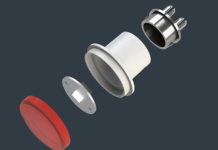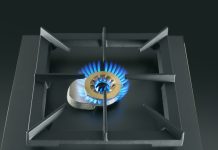The functional and technological characteristics of plastic make this material indispensable in the manufacturing of manifold products in several application sectors, including household appliances. What happens when, at the end of an appliance service life, plastic becomes a waste and then a problem for the environment? A “circular” approach through the recycling of plastic, to succeed in re-introducing it into the manufacturing system, might be a valid solution to avoid wasting this material and to decrease the environmental impact.
Over the years, plastic has lived an astonishing technological evolution and today on the market there are several polymers that can solve the vast majority of the manufacturing requirements of household appliances’ components. Plastic materials are produced from fossil fuels and when products are worn-out, this material is conveyed among the wastes in landfills. The European Commission has presented, in conformity with the European Green Deal, the action plan for a new circular economy that includes proposals about the design of eco-sustainable products and materials’ recycling processes, including plastic, to be re-introduced into the production cycle, with a consequent decrease of wastes. With the resolution dated February 10th 2021, the European Parliament approved the text on the new action plan for the circular economy (P9_TA-2021-0040).
| ORIENTING INNOVATION AND INVESTMENTS TOWARDS CIRCULAR SOLUTIONS Plastic wastes coming from electric and electronic equipment, if badly managed, contribute in increasing the environmental pollution. To be able to give new life to plastic wastes through reclamation and recycling treatments, paves the way to new opportunities of eco-sustainable manufacturing processes. Therefore, are developed the foundations for a “circular” vision that involves all chain players. In compliance with the 2009/125/CE directive on eco-design, it is necessary to design by taking products’ life end into account, with the aim of facilitating recycling processes to re-introduce the largest quantity of secondary raw material into production. Therefore, a cooperation along the whole chain is necessary, from the industry operating in the plastic processing up to public and private enterprises for the waste management. Within the chain, a strict collaboration between the chemical industry and the manufacturers of polymers is fundamental to make plastic materials with suitable characteristics for recycling, eliminating the problematic chemical substances, which are noxious for the environment, such as some harmful additives and flame retardants (including brominated ones), which are a hindrance for recycling processes. Besides, it is important to implement a traceability system regarding the features of the plastic type of each manufactured item, to facilitate and to improve the recycling process with the aim of obtaining a secondary raw material with coherent and compatible purity degrees for the re-introduction into manufacturing. To favour these developments and to address investments, the European Commission is working at new regulations to make plastic recycling processes more user-friendly and reliable, enhancing and upgrading the selection and traceability skills of the wastes to be recycled, besides creating sustainable markets for the secondary raw material. The Commission prosecutes its commitment to developing, in the ambit of the directive about the eco-compatible design, the requisites for the products that consider the aspects concerning the circular economy. In that way, it will be easier to recycle the plastic used in a broad range of household appliances and electronic products. Finally, the Commission will develop a strategic programme for the research and innovation about plastic, with the goal of providing orientations for the funding of research activities, in order to increase the volumes of recycled materials in the manufacturing of new products, for the achievement of the sustainable development targets fixed for 2030. (Source: Eur-Lex European Commission COM-2018 28 final e COM-2020 98 final) |
Recycled plastic for household appliances
We can distinguish two fundamental typologies of recycled plastics:
-PCR, post-consumer recycled, that is to say secondary raw material obtained from recycling processes of plastics deriving from the sorted collection of urban solid wastes or from WEEE (waste electric and electronic equipment) collection centres, then from wastes of products, used by consumers, which have reached their life end.
-PIR, post-industrial recycled, that is to say plastics obtained from the recycling of plastic materials’ industrial wastes, as defined by ISO 14021.

Modern recycling plants for the treatment of plastic wastes have technologies able to achieve a secondary raw material with a negligible presence of “polluting materials”, that is to say polymers differing from the target one. We obtain a recycled homogeneous plastic, compatible and similar to the one of the equivalent virgin raw material. Recycled, in particular post-consumers ones, might have slightly lower physical-mechanical characteristics than the corresponding virgin polymer. The problem is solved by mixing the recycled with specific additives, achieving a product ennobled with coherent features versus the corresponding raw material derived from oil, but with an inferior footprint of CO2.
We can mention as example the Italian recycling plant of the Swedish Stena Recycling that, through an innovative process of remediation and separation by mechanical treatment (by flotation and dry) of the wastes of plastics deriving from WEEE, can remove the impurities, including metals, and separate plastics by type of polymer. Moreover, during the process are identified and discarded the plastics that contain harmful substances such as brominated flame retardants. The plant produces about 15,000 tons/year of End of Waste recycled plastic in scales or pellet, subdivided into polypropylene (PP), polystyrene (PS) and acrylonitrile-butadiene-styrene (ABS).
In EU ambit, the European Certification of Plastics Recyclers (EuCertPlast) works to standardize the plastic recycling process through a project co-funded by the European Commission in the ambit of the Eco-Innovation programme. The target of EuCertPlast consists in acknowledging the companies of recyclers that treat post-industrial and post-consumer plastic wastes, operating according to high eco-friendly standards, through a scheme certified referring to the EN 15343:2007 European regulation. The certification focuses on the traceability of the kinds of plastics in the treatment cycle, from the provisioning chain to the entire recycling process, up to defining the characteristics of the secondary raw material produced. The certification released to recyclers after suitable assessments increases the transparency and the quality of the European industry of recycled plastic.
According to the data supplied by APPLiA (Association of Home Appliance Manufacturers), the use of recycled plastic materials is constantly growing for the sector of household appliances, with volumes that depend on the quality of the secondary raw material and on the quantity that assures a constant supply. Therefore, it is necessary to win various challenges before the recycled content can be used on a large scale. The use of recycled plastic in household appliances must not affect the quality of products and the safety of consumers, satisfying suitable criteria that can be summarized in the following items:
-Technical requisites: the recycled polymer must assure the chemical-physical-mechanical performances of the produced component, not to damage the standards of manufacturing quality.
-Requisites of safety and legislative conformity: we can mention the conformity with RoHS directive and REACH regulation (concerning the restriction about the use of dangerous substances) and, where required, the regulation about the food-grade compatibility. Therefore, for the recycled plastics of uncertain origin, laboratory tests and analyses are necessary to certify the compliance with these requisites.
-Aesthetical requisites: increasing the offer of chromatic varieties of recycled plastics and the use possibility, also to implement external parts of household appliances where polished error-free surfaces are demanded.
-Supply availability: granting a constant availability of recycled plastics with the above-described requisites, able to grant the provisioning to conform to companies’ production plans.
-Costs: developing a suitable market of high-quality secondary raw material, with a control on the costs of the recycled polymer that must remain competitive in comparison with the corresponding virgin polymer.
With the target of enlarging processes to satisfy these requisites, standardization proceedings are in progress after the demand to CEN (European Committee for Standardization) and to CENELEC (European Committee for Electrotechnical Standardization) for a regulation concerning the recycled plastics and the plastic recycling, notified by the European Commission.




